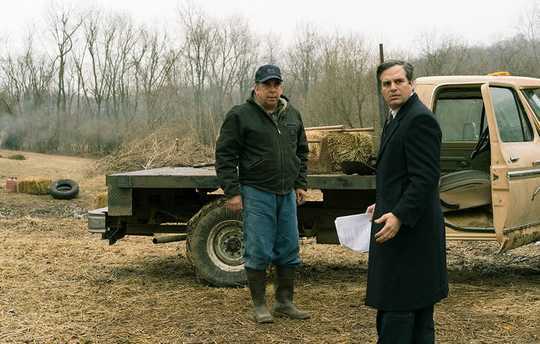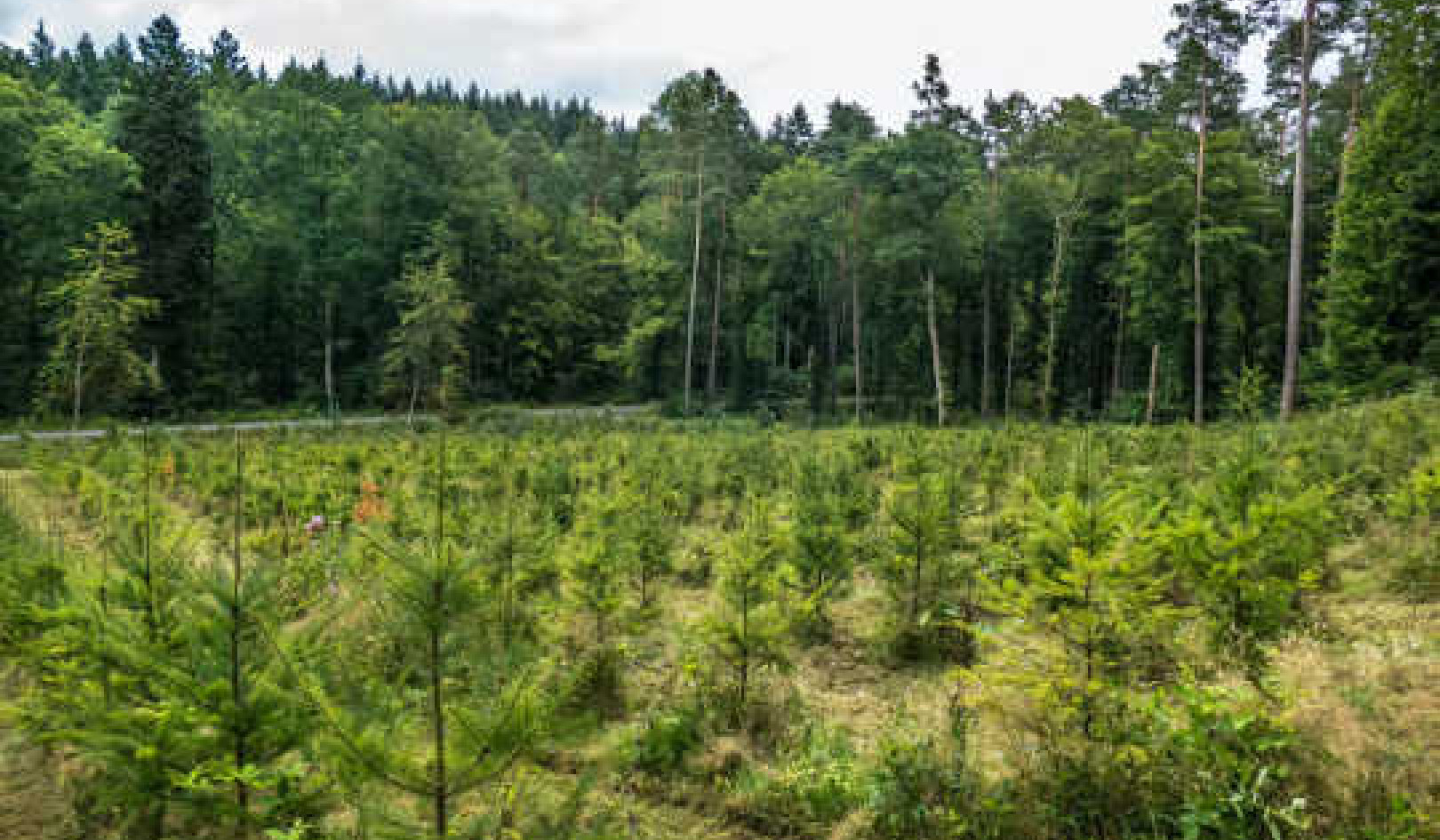 Mark Ruffalo plays corporate defence attorney Robert Bilott in Dark Waters (2020). Focus Features
Mark Ruffalo plays corporate defence attorney Robert Bilott in Dark Waters (2020). Focus Features
If you live in the US or Australia, you’re likely to know about PFAS (or perfluoroalkyl and polyfluoroalkyl substances). But in the UK, few people have heard of them, despite one scientist I know describing the presence of these pollutants in UK groundwater as “a ticking timebomb”.
Dark Waters, directed by Todd Haynes and starring Mark Ruffalo, has helped popularise the story of PFAS pollution in the US. It focuses on true events in the US town of Parkersburg, West Virginia, where a local factory began making Teflon in the 1950s. Despite the industry allegedly knowing the risks of these compounds, over 1.7 million pounds of PFOA – a particular type of PFAS – were emitted to the environment between 1951 and 2003.
Research suggests that the safety threshold for PFOA in drinking water may be as low as 0.1 parts per trillion. That’s 700 times lower than the safe level that has been cited by the Environmental Protection Agency in the US. Since 1951, over 50,000 Parkersburg residents have been affected by PFAO contamination in their drinking water.
It wasn’t an incompetent small-time outfit that was implicated in the scandal, but the multinational DuPont. The case rolled on through the 1990s and early 2000s, ultimately resulting in a class action lawsuit worth several hundred million dollars. But the toxic influence of PFAS stretches beyond Parkersburg and DuPont. Today, the whole planet is contaminated with them.
For much of my career, I’ve worked as an environmental forensic investigator, identifying sources of pollution and measuring the exposure to humans and wildlife. As scientists, we’re normally reserved in our choice of words, but PFAS could be described as one of the most dangerous groups of pollutants in the world today.
Dream additive, nightmare pollutant
PFAS are a group of synthetic organic chemicals that consist of multiple fluorine atoms attached to a carbon backbone. They are incredibly useful compounds with great waterproofing properties. They’re added to coats and coffee cups to stop liquids leaking in or out. They’re also used in food packaging to stop grease seeping through and frying pans to help make washing up easier. PFAS can also form effective foams which are used by firefighters to combat some of the most extreme fires, such as on oil rigs and in airports. So what’s the problem?
Well, for one, PFAS are highly toxic. They persist in the environment and accumulate in animal tissue so effectively that they’ve been nicknamed “forever chemicals”. PFAS exposure has been linked to several different diseases, including testicular and kidney cancer. They are also soluble in water, which means that they can travel much faster through the environment than other persistent organic pollutants such as PCBs and dioxins.
PFAS have been used for decades, and their levels in the environment are increasing. It’s only recently that we discovered that they are even present in remote Arctic regions, where there is no known local source. While research has helped establish contamination levels in the US and Australia, much less is known about the UK, where PFAS have been widely used for decades. They must be accumulating in the environment somewhere.
 PFAS are used in food packaging – including takeaway pizza boxes. Maxx-Studio/Shutterstock
PFAS are used in food packaging – including takeaway pizza boxes. Maxx-Studio/Shutterstock
Understanding the scale of the issue is one thing, and was an important first step in adding the PFAS compounds PFOS and PFOA to the Stockholm Convention, an international treaty focused on eliminating persistent organic pollutants, in 2009 and 2019 respectively.
The manufacture of these two chemicals is now being phased out, but other PFAS compounds are being used in their places. These are still likely to be toxic and persistent and to accumulate in ecosystems. A recent study estimated that there are over 4,700 different PFAS compounds in the world today. Rather than having high concentrations of a small number of PFAS, there is a high total concentration of a wide number of PFAS. The problem hasn’t gone away, it has just got more complicated.
How we uncover the truth
In forensic investigations of pollution, scientists have to identify who is responsible. The case depicted in Dark Waters was pretty clear cut, but there are so many different potential sources of PFAS, as they have been used widely for decades in many different products. This can make identifying one source of PFAS from another difficult.
I research new techniques for measuring pollutants in the environment that can differentiate between sources. One technique, called chemical fingerprinting, can identify sources of pollution by comparing the chemical composition of a suspected source material to the chemical signature found at the pollution site. This is similar to traditional forensic fingerprinting, where police compare a suspect’s fingerprints to those found at a crime scene. These signatures can change over time as the chemicals are degraded and altered in the environment, but we have developed methods to cope with this.
 Forensic investigators can now match pollution to its source in a similar fashion to detectives matching culprits to their fingerprints at a crime scene. Viicha/Shutterstock
Forensic investigators can now match pollution to its source in a similar fashion to detectives matching culprits to their fingerprints at a crime scene. Viicha/Shutterstock
Scientists are often hired as expert witnesses and called to court to present evidence and explain who is responsible for a pollution incident. While we might get paid by a company we are defending, our duty is to provide a balanced assessment of the evidence to the court. This is the only way that those who have been affected by environmental pollution can obtain some kind of justice.
Dark Waters might increase public awareness of PFAS in the UK and other countries when it launches on February 28, but could it drive research to uncover environmental contamination? Scientists have all the tools at their disposal to undertake this task. It is just a matter of funding and public support.![]()
About The Author
David Megson, Senior Lecturer in Chemistry and Environmental Forensics, Manchester Metropolitan University
This article is republished from The Conversation under a Creative Commons license. Read the original article.
Books on The Environment from Amazon's Best Sellers list
"Silent Spring"
by Rachel Carson
This classic book is a landmark in the history of environmentalism, drawing attention to the harmful effects of pesticides and their impact on the natural world. Carson's work helped to inspire the modern environmental movement and remains relevant today, as we continue to grapple with the challenges of environmental health.
Click for more info or to order
"The Uninhabitable Earth: Life After Warming"
by David Wallace-Wells
In this book, David Wallace-Wells offers a stark warning about the devastating effects of climate change and the urgent need to address this global crisis. The book draws on scientific research and real-world examples to provide a sobering look at the future we face if we fail to take action.
Click for more info or to order
"The Hidden Life of Trees: What They Feel, How They Communicate?Discoveries from A Secret World"
by Peter Wohlleben
In this book, Peter Wohlleben explores the fascinating world of trees and their role in the ecosystem. The book draws on scientific research and Wohlleben's own experiences as a forester to offer insights into the complex ways that trees interact with one another and the natural world.
Click for more info or to order
"Our House Is on Fire: Scenes of a Family and a Planet in Crisis"
by Greta Thunberg, Svante Thunberg, and Malena Ernman
In this book, climate activist Greta Thunberg and her family offer a personal account of their journey to raise awareness about the urgent need to address climate change. The book provides a powerful and moving account of the challenges we face and the need for action.
Click for more info or to order
"The Sixth Extinction: An Unnatural History"
by Elizabeth Kolbert
In this book, Elizabeth Kolbert explores the ongoing mass extinction of species caused by human activity, drawing on scientific research and real-world examples to provide a sobering look at the impact of human activity on the natural world. The book offers a compelling call to action to protect the diversity of life on Earth.























